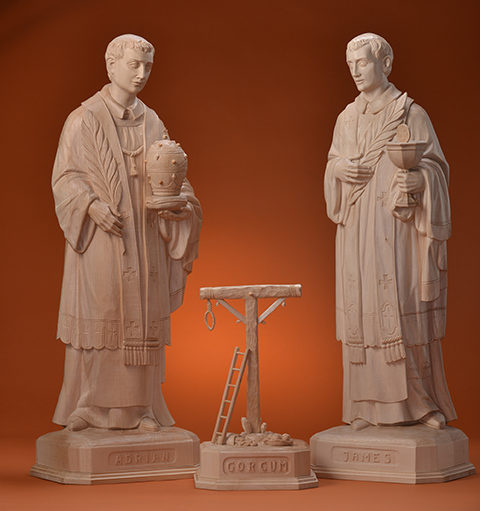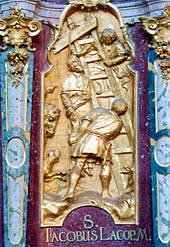Saints and Blesseds
Sacred Norbertine ancestors cross many ages and nationalities — from the early members of the original community at Prémontré in France to the martyrs of the order in the Holy Land, and from the challenges of the reformation to the crises of the modern era.
Throughout and beyond the centuries-old existence of their order, outstanding Norbertine men and women of heroic virtue remain sources of edification, inspiration and models for daily life.
Many disciples of Norbert attained sanctity and were drawn to his way of life, helping to further his ideals and values. Some followers left their high status as nobility and humbled themselves to found new houses of the order. Others used their talents as administrators, scholars, preachers and teachers, and still others simply served with generosity and humility.
Sts. Adrian and James


On July 9, 1572, the Calvinists hanged 19 priests and religious in Gorcum on account of their loyalty to the Catholic faith. Among these were two sons of St. Norbert, Adrian and James.
Adrian Jansen (sometimes called Becan after his place of birth) was born at Hilvarenbeek in 1529 and entered the abbey of Middelburg at the age of 15. After a stint as master of novices and chaplain, he was appointed pastor of Agterkerke in 1560 and of Munster in 1572. Adrian was an exemplary priest and a true apostle, laboring in a parish which already counted several Calvinists among its population.
James Lacops, also a canon of Middelburg, was born at Oudenaarde in 1542. He was an intelligent and charming young man whose success went to his head. His religious life was mediocre. When the iconoclastic Calvinists infiltrated the abbey in 1566, the 24-year-old James renounced his faith together with two others. His father and his brother, who also was a Norbertine, eventually brought him to reconsider. Touched by the grace of God, he returned to the abbey and was kindly received by the community when he asked forgiveness for his apostasy. Among other things, he had gone so far as to write a pamphlet attacking the Church and had become a preacher of the Calvinist beliefs. His abbot sent him to the abbey of Mariëweerd for a prolonged period of penance. At the end of five years, the abbot appointed him curate in Munster where his brother was currently pastor. After the death of his brother in 1572, Adrian Jansen was appointed pastor.



